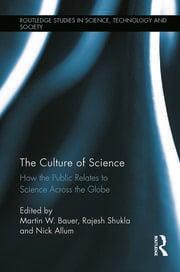Information and attitudes towards science and technology in Iberoamerica

"The studies generally branded as part of the Public Understanding of Science (PUS) ‘movement’ encompass diverse traditions and analytical perspectives.1 Demoscopic surveys of attitudes towards science and technology (S&T) have been a widely applied tool in the PUS tradition. These surveys were fi rst developed in the US, some central countries (UK, France), and Europe (Eurobarometer), although later they were adopted in other countries and regions of the world (Canada, Japan, New Zealand, India, Italy, China, Spain, Russia, South Korea, Argentina, Brazil, Mexico, Colombia, etc.). Along with this expansion-and as a consequence of it-there has been a proliferation of works on the topic, including debates about indicators (Allum et al., 2008; Raza et al., 2002), statistical consistency (Pardo, Calvo, 2002), analytical dimensions (Osborne, 2003; Wynne, 1995; Michael, 1998; Miller, 1998), methodologies (Pardo, Calvo, 2004), models (Wagner, 2007; Pardo, Calvo, 2006; Sturgis, Allum, 2004; Godin, Gringas, 2000) and interpretations derived from fi eld work carried out at the local, regional, and international levels (Allum et al., 2008; Miller, 2004; Bensaude-Vincent, 2001; Miller, Pardo, Niwa, 1997; Bauer, Shoon, 1993; Bauer et al., 1993). Currently, many analysts are convinced that it is time to fi nd integrating perspectives that might allow a greater convergence between the traditions. An ambitious agenda is presently being canvassed along these lines, aiming to tackle problems concerning PUS using a unifi ed and international perspective (Bauer, Allum, Miller, 2007), integrating national and international surveys into a global database, and developing global indicators and alternative data streams, such as media monitoring and longitudinal qualitative research (Bauer, 2008:125)."